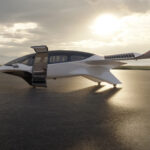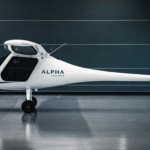Leonardo and Pratt & Whitney Canada have announced the successful completion of the first flight for a AW139 intermediate twin helicopter, powered by PT6C-67C engines, using 100% Sustainable Aviation Fuel (SAF).
Accomplished at Leonardo’s facility in Cascina Costa di Samarate, Italy on 21 November, the 75-minute flight and ground tests evaluated engine performance with multiple power variation and other systems. The test showed an outstanding response to the new fuel with no significant differences compared to the use of Jet A1 fuel.
This goal marks a historic first for both Leonardo’s helicopters and the Pratt & Whitney Canada PT6 engine family. Earlier this year in-service AW139 helicopters carried out flights with SAF, blended with traditional jet fuel under the current certification standards, in Japan, Malaysia, and most recently UAE. All main civil-certified types within the Leonardo’s helicopter product range are certified for operations using SAF with a blended ratio of up to 50%.
The 100% SAF demonstration flight of the AW139 is a further testament to the outstanding design and performance of the aircraft and its systems, ranking as the most successful helicopter in its class with an unrivalled and growing impact.
With more than 1,100 AW139s in service worldwide and almost 4 million flight hours logged to date, this result shows another tangible benefit of the aircraft’s possibilities to the many operators carrying out missions in all weather and environmental conditions as they aim for more ambitious sustainability goals.
Gian Piero Cutillo, Leonardo Helicopters MD, said: “With this latest result we are demonstrating how we can support the rapid evolution of sustainability requirements in aviation as the industry aims at a greater use of SAF in operations.
We did so with the world-class AW139 testifying that this technology allows more sustainable operations keeping the same level of high performance, significantly contributing to lower CO2 emissions. We’re committed to joining forces with aviation partners and suppliers, authorities, energy leaders and rotorcraft service providers to incentivise the use of SAF to sustain carbon footprint reduction.”
“This first flight effectively demonstrates engine functionality and is an important part of our long-standing efforts to support the development of future specifications for 100% SAF, a core part of our sustainable propulsion strategy,” said Maria Della Posta, president, Pratt & Whitney Canada.
“This is the first time a PT6 engine has flown using 100% SAF. This milestone builds on its unrivalled legacy of success and underlines how the engine family can contribute to a more sustainable future in aviation. Since entering the market 60 years ago, the PT6 engine family has clocked more than 500 million flight hours, 8.3 million of which were on PT6C turboshaft engines.”

